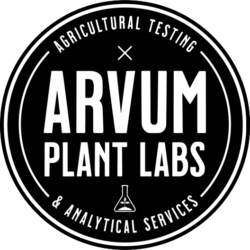
EVE Efficacy Cannabis Growth Trial
Product Description: EVE is a supplemental sub-micron mineral that provides micronutrients in a bioavailable format.
Soil Labs performed an in-depth 12 week efficacy test of EVE on cannabis. This took place over the test plants entire harvest cycle. The goal was to categorically determine the effects EVE had on growth, yield, potency, terpene content, and mineral nutrient concentration of the leaves. EVE was applied in addition to a standard fertilizer regiment in the test for a total of four treatments using four replicates per treatment.
Leaf tissues samples were collected every two weeks and analyzed for mineral nutrient concentrations. The samples were analyzed on a dry weight basis using inductively coupled plasma optical emission spectroscopy (ICP-OES) and combustion analysis. Potency was measured using a high pressure liquid chromatograph (HPLC) with a diode array detector. Terpenes were measured using headspace gas chromatography couple with mass spectrometry (HS-GC/MS).
| Use Site: | Palomar Craft Cannabis. |
| Crop Cultivar/Source: | Wedding Crasher (Indica Dominate Hybrid). |
| Potting/Rooting Media: | Greenlite for 1 gal and Roots Original Organic Soil 5 gal by Aurora Innovations. |
| Experimental Design: | EVE was applied at three different rates: 2oz/gal, 4oz/gal, 8oz/gal. |
| Pot Size & Spacing: | 1 gal pots in 6” x 6” space and 5 gal pots in a 1.77’ x 1.77’ space. |
Results:
The Wedding Crasher that were treated with the EVE foliar spray on average produced larger flowers than the untreated replicates. The 4 oz/gallon treatment had the greatest overall yield with 240 grams of total sell-able flower and trim, a 10.09% increase in total biomass. All of the treatments had a greater percentage of large (Bigs) flowers (148g vs. 123g from the control) versus the control. 4oz resulted in an 20.33% increase in yield, and a 20.33% increase in revenue. The potency values were roughly equivalent across all treatments. The total terpene concentration was 17.05% higher (1.76% vs. 2.06% average) in the treated plants.
The THC potency values were roughly equivalent across all treatments. The total terpene concentration was higher (2.06% vs 1.76% average) in the treated plants.
Yield
The plants were dried, cured, and trimmed prior to separation and weighing.
| Treatment | Trim | Popcorn | Smalls | Bigs | Total Flower |
| Control | 90g | 7g | 88g | 123g | 218g |
| EVE | 84g | 4g | 88g | 148 | 240g |
Potency
There was not a substantial difference in potency values from the control sample and the treated samples. Controlled 20.5% versus EVE 19.8%.
Terpenes
The total terpene concentration of EVE was higher with an average terpene concentration in the flower of 2.06% versus the control samples with a total terpene concentration of 1.76%, resulting in a 17.05% increase in terpenes.
Results Summary
EVE realized a significant overall increase in yield at the 4 oz/gallon treatment rate.
- Biomass Increase: Overall biomass increase was 10.09%.
- Bigs Flower Size: increased by 20.33%.
- Bigs Revenue Increased: 20.33%.
- Potency: Values did not change from the treated to untreated samples.
- Terpene: Concentration from the control to the treated samples increased by 17.05%.
- Nutrition Stability: The variance in essential nutrient concentrations were limited with the treated plants vs. the untreated.
Other Positive Results:
- The application of EVE does not negatively affect the chemical profile of the plant.
- Powdery mildew was observed on the control plants. None of the plants treated EVE exhibited symptoms of powdery mildew.
- Further studies will be conducted to confirm the efficacy of EVE treatment on powdery mildew.
- Although, it was not an official part of this Efficacy Test, we did see substantial results/benefits during the cloning and germination process, as well as using EVE for Repair and Recovery. More tests will be conducted in this area.
